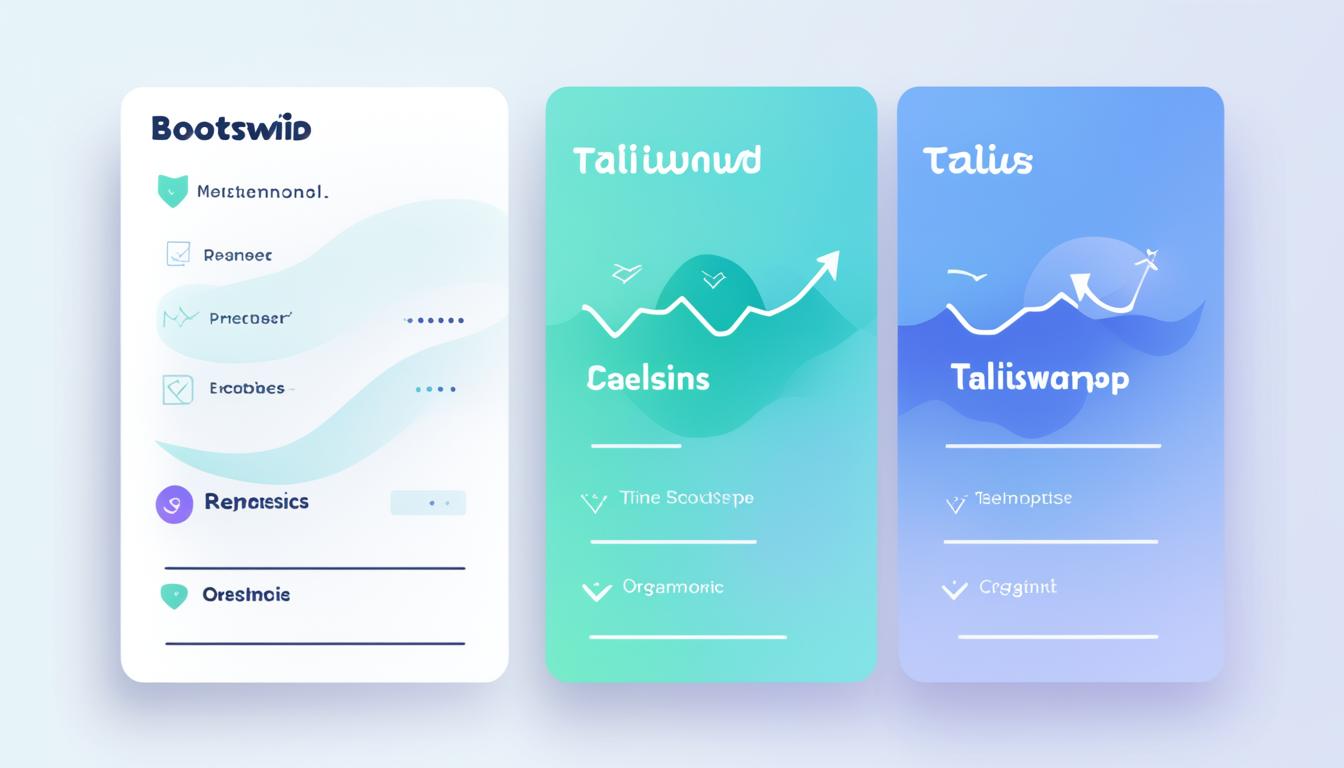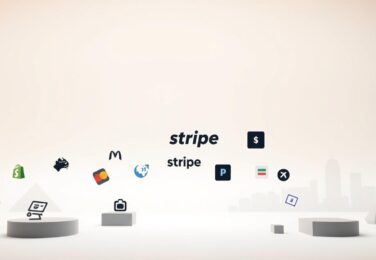Tailwind vs Bootstrap: Which CSS Framework to Choose?

Table of Content
In Australia, having a solid base is key for building anything, like a house, a business, or a website. Choosing between Tailwind CSS and Bootstrap is vital for front-end web development. These two CSS frameworks have different ways to make websites look good and work well on all devices. We’ll look at the main differences between them to help you pick the right one for your web projects.
Key Takeaways
- Tailwind CSS and Bootstrap are top choices for building websites
- Tailwind uses a utility-first method, while Bootstrap focuses on components
- Each framework has its pros and cons in areas like responsive design and styling
- Think about performance and how well they work with other frameworks
- Your choice between Tailwind and Bootstrap depends on your project needs and team’s style
Understanding CSS Frameworks
Web development keeps evolving, and CSS frameworks are now key tools for making front-end work easier. They’ve changed how we style web pages, tackle responsive design issues, and boost developer efficiency. Two main ideas have stood out: utility-first CSS and component-based CSS.
The Rise of Utility-First and Component-Based Styling
Utility-first CSS, like Tailwind CSS, focuses on a detailed, class-based styling system. It lets developers add styles to HTML elements with pre-defined utility classes. This makes styling more functional and modular. On the other hand, component-based CSS, seen in Bootstrap, puts styles into reusable UI components. It offers a structured way to build interfaces.
Streamlining Front-End Development Workflows
Utility-first and component-based CSS frameworks have changed how we work on the front end. They make responsive design easier, helping us create websites and apps that work well on all devices. They also come with many pre-built components, like menus, buttons, and forms, which speed up project development.
Knowing the differences between these CSS philosophies is key to picking the right framework for your projects. Whether you like the detailed control of utility-first CSS or the structured method of component-based CSS, these frameworks have changed web design and building.
Tailwind CSS: The Utility-First Approach
In the fast-changing world of front-end development, Tailwind CSS is a big deal. It uses a utility-first method for styling. Unlike old CSS frameworks, Tailwind gives us a bunch of utility classes to mix and match for our own styles. This way, we can quickly build and change our interfaces without being stuck with pre-made parts.
Rapid UI Development with Utility Classes
The utility-first approach of Tailwind CSS lets us make user interfaces fast and well. We use a lot of utility classes to make complex designs by just adding these classes to our HTML. This makes us skip writing custom CSS, so we can focus more on what our apps do and how they work.
- Tailwind’s utility classes cover a wide range of styling properties, from typography and layout to color and spacing.
- We can easily add these classes to our HTML elements, making our interfaces look good without writing a lot of CSS.
- This rapid UI development method lets us quickly try out new designs, making it perfect for projects with tight deadlines or changing needs.
By using Tailwind CSS’s utility-first way, we can make our front-end development work smoother and let our creativity shine. This framework is great for developers who want to get better at making user experiences. Its flexibility and ability to be customized make it a top pick for boosting productivity and design skills.
Bootstrap: The Powerhouse of Component-Based Design
Bootstrap is different from Tailwind CSS. It’s a full CSS framework that comes with many pre-made UI components. These include things like buttons, menus, and forms. This makes building websites or apps easier and keeps everything looking the same.
For teams on big projects or those needing a strong visual design system, Bootstrap is great. It has lots of ready-to-use components. This means developers can make user interfaces fast, saving time and making sure everything looks good together.
Also, Bootstrap fits well with the trend of component-based development. This method breaks the interface into smaller, reusable parts. It makes building and updating things easier. Teams can work on parts instead of the whole thing.
“Bootstrap’s pre-built components are a game-changer for our team. We can rapidly prototype and build complex user interfaces without having to reinvent the wheel.”
Using Bootstrap, developers can make interfaces that look good and work well on all devices. It follows best practices and design patterns. This makes building faster and keeps the brand and user experience consistent.
Overall, Bootstrap is a strong choice for big, complex projects needing a solid user interface. Its big library of components and design patterns helps developers work faster and gives a polished look to the user experience.
Tailwind Vs Bootstrap: Comparing Key Features
When looking at Tailwind and Bootstrap, we see how they handle responsive design, help developers work faster, and ease the learning process. Both focus on making mobile-friendly designs. Yet, they go about it in different ways.
Responsive Design and Mobile-First Methodologies
Tailwind uses a class system for easy responsive layouts. This lets developers quickly make components that change with different screen sizes. Bootstrap, however, has ready-made responsive parts and a grid system. This makes building mobile-friendly designs more structured.
Developer Productivity and Learning Curves
Tailwind is great for quick prototyping and building interfaces thanks to its utility classes. This means less CSS writing. For larger teams or beginners, Bootstrap might be better. It’s more familiar and has lots of help resources, making it easier to start with.
“Tailwind’s utility classes make it easier to create custom responsive layouts, while Bootstrap’s predefined components provide a more structured approach.”
Choosing between Tailwind and Bootstrap depends on your project’s needs, your team’s CSS knowledge, and how much design control you want.

Performance Optimization: Tailwind or Bootstrap?
Choosing a CSS framework is key to a website’s speed. Tailwind and Bootstrap each have their own way to make websites fast. Knowing how they differ can really help your project do well.
Tailwind focuses on utility and might make files bigger because it has lots of utility classes. But, it also has tools to make sure unused styles don’t slow things down. This means your site can be fast and efficient, even with lots of classes.
Bootstrap is usually lighter because it only includes styles for the parts you use. This makes your site load quicker and run smoother. But, you might need to put in more effort to make it look just right for your site.
“Striking the right balance between style and performance optimization is essential for creating high-performing websites that deliver an exceptional user experience.”
Choosing between Tailwind and Bootstrap depends on what your project needs, how your team works, and what you want for performance optimization. Both frameworks have great options for making your site fast. The choice should be based on what you really need and what you’re okay with giving up.
Understanding how each framework affects performance optimization helps you pick the best one for your project. This way, you can make sure your site works great for everyone who visits.
Styling Flexibility: Tailwind’s Customizability
As web designers and developers, we know that one size doesn’t fit all. Tailwind CSS stands out because it lets us easily change or add to the default classes. This makes it easy to match our brand’s unique style.
This styling flexibility changes the game. It ensures our work fits perfectly with the branding guidelines and overall look. Unlike frameworks like Bootstrap, Tailwind lets us create unique and personal user experiences.
Tailoring Designs to Branding Guidelines
Tailwind makes it easy to adjust the default classes to fit our brand’s colours, fonts, and designs. This Tailwind customizability lets us build interfaces that match the brand well. And we still get the efficient code Tailwind is known for.
“Tailwind’s high degree of customizability allows us to easily align our designs with our brand’s unique visual identity.”
Whether it’s a corporate site, an e-commerce platform, or a social media app, Tailwind’s flexibility helps us create a cohesive and beautiful user experience. This experience reflects the brand well.

By using Tailwind’s customizability, we unlock a new level of styling flexibility. This elevates our projects and gives our users an exceptional experience that connects with them.
Bootstrap’s Robust Ecosystem and Community
Choosing a CSS framework means looking at its ecosystem and community. Bootstrap stands out here. It has a strong developer community and lots of pre-built components and plugins. This makes it a great choice for speeding up front-end work.
Leveraging Pre-Built Components and Plugins
Bootstrap’s big win is its many pre-built components and plugins. You’ll find everything from responsive menus and modals to carousels and forms. This lets developers quickly make interfaces that look great and work well, without starting from zero.
The Bootstrap community has also added thousands of plugins and extensions. These plugins help with things like showing data, making carousels, checking forms, and adding social media links. Using these tools, teams can save time and focus on adding new and interesting features to their projects.
| Pre-Built Components | Plugins and Extensions |
|---|---|
|
|
Bootstrap’s strong ecosystem and active community offer a solid base for developers. They ensure stability, ongoing support, and lots of resources and solutions. This makes Bootstrap a top pick for teams that want efficiency, consistency, and a proven track record in front-end work.
WordPress Theme Development: Tailwind or Bootstrap?
In Australia, WordPress developers often have to choose between Tailwind and Bootstrap for making themes. Both have their own benefits, and the choice depends on the project’s needs and our team’s likes.
Tailwind is great for wordpress theme development because it focuses on utility. It gives us a lot of pre-defined classes to make custom designs easily. This is super useful when we need to follow strict branding rules or create unique looks.
Bootstrap is better for projects that need to work well with many plugins and other solutions. It has a big library of pre-made components. This helps us make WordPress themes fast, without needing to write a lot of code.
Choosing between Tailwind and Bootstrap for wordpress theme development in Australia depends on the project’s needs, our team’s preferences, and how easy it is to maintain and grow the theme. By looking at the good and bad of each framework, we can make sure our themes look great and work well for our clients and their visitors.
Integration with Popular Front-End Frameworks
Web development is changing fast. Using CSS frameworks with React, Vue, and Angular is now key. Tailwind and Bootstrap make it easy to boost your app’s look and feel.
Enhancing React, Vue, and Angular Applications
Tailwind fits well with React, Vue, and Angular‘s design. Developers can add Tailwind’s classes to their components easily. This makes building apps faster and keeps the design consistent.
Bootstrap also helps speed up making complex web apps with these frameworks. It has many pre-made UI elements. This makes it great for developers who want to work quickly and efficiently.
Choosing between Tailwind and Bootstrap depends on what you like and your project needs. Think about how each framework affects customization, how it helps you work, and your project’s goals.
“Both Tailwind and Bootstrap offer seamless integration options, allowing developers to enhance the functionality and visual appeal of their applications.”
Tailwind Vs Bootstrap: Making the Right Choice
Choosing the right CSS framework for your web project in Australia is key. Tailwind and Bootstrap both have great features, but it depends on what you need. Let’s look at what to think about when picking between these two frameworks.
Flexibility and Customisation
Tailwind lets you easily change your designs to fit your brand. It’s great if you want to make unique designs. Bootstrap, on the other hand, has a structured way of building that’s good for teams new to front-end work.
Development Productivity
Tailwind’s utility classes make coding faster and cut down on custom CSS. But, Bootstrap’s components and plugins can also speed up projects for experienced developers.
Performance and Optimisation
Both Tailwind and Bootstrap focus on being fast and efficient. Tailwind only uses the CSS classes you need, making files smaller and loading quicker. Bootstrap has many components, so you’ll need to make sure it’s optimised well for the best performance.
Choosing between Tailwind vs Bootstrap depends on your project’s needs. Think about your team’s skills, the project’s complexity, and how much customisation you want. Both Tailwind and Bootstrap are great tools for making beautiful, responsive websites and apps.
“The right CSS framework can make all the difference in the success of your web project. Take the time to evaluate Tailwind and Bootstrap thoroughly to ensure you make the best choice for your unique needs.“
Conclusion
In the fast-changing world of web development, choosing between Tailwind CSS and Bootstrap is crucial for our projects in Australia. We need to know the strengths and downsides of each framework to make the right choice. This choice should match our needs and how we work.
Do we like Tailwind’s flexible approach or Bootstrap’s strong structure? Both frameworks give us the tools to make amazing user experiences. The best framework for our project depends on our team’s skills, the project’s needs, and how much we want to customize.
If you need help with custom WordPress development, just reach out to us at hello@defyn.com.au. We’re ready to guide you through front-end frameworks and make sure your projects in Australia succeed.










